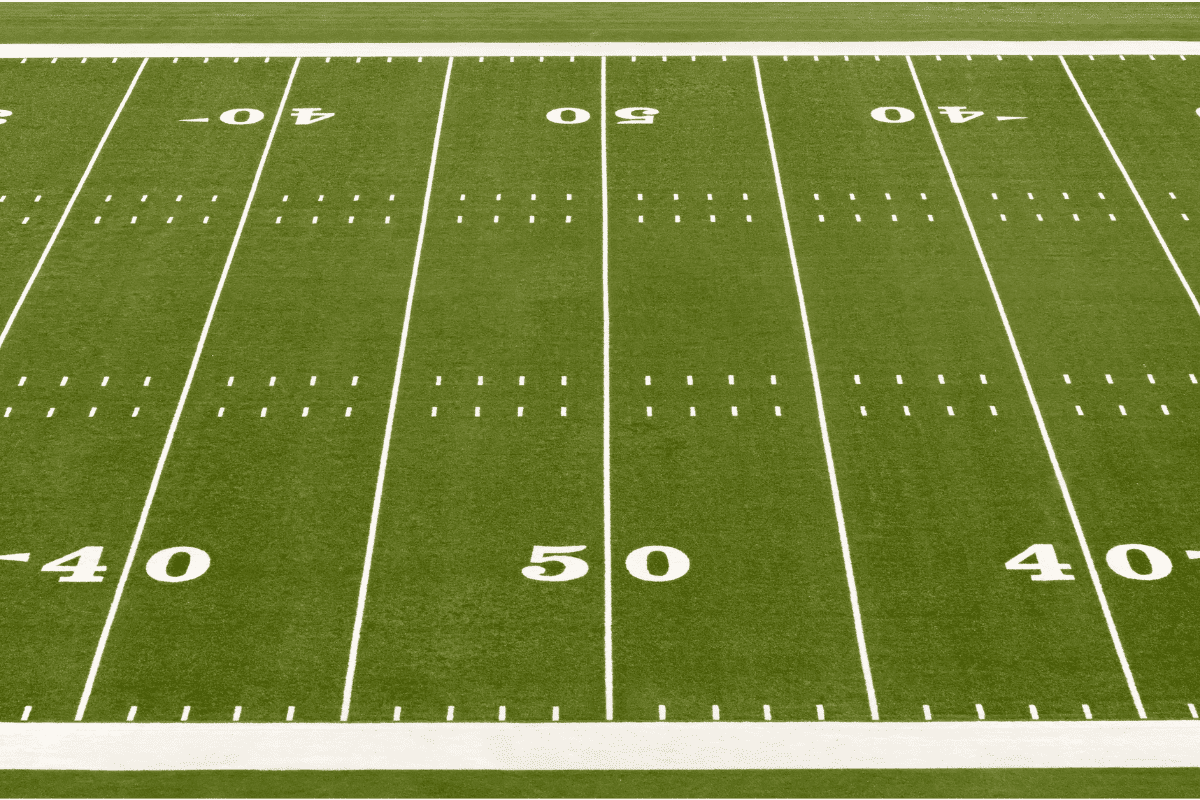Understanding the Football Field: Dimensions and Markings
As a football journalist, I’ve come to appreciate the intricacies and strategies that shape the game of American football. Central to these strategies is the field itself. For newcomers to football, understanding the layout, dimensions, and markings of the field can significantly enhance your appreciation of the game.
Let’s delve into the specifics.
Key Takeaways
- Standardized Dimensions: An official NFL football field is 120 yards long (including end zones) and 53 1/3 yards wide, ensuring a fair and consistent playing ground for all teams.
- Scoring Areas: The end zones, spanning 10 yards deep at either end of the field, and the goal posts positioned at the back of these zones, are critical for touchdowns and field goal scoring.
- Field Maintenance: Whether grass or artificial turf, maintaining the field’s condition is paramount for player safety and optimal gameplay.
Introduction
American football is more than just a sport—it’s a rich tapestry of strategy, athleticism, and tradition. Played on a unique field with its own set of dimensions and markings, the game is deeply rooted in the layout of this battleground.
Having a standardized field (unlike Baseball, for example, where each team’s field has it’s own unique dimensions) ensures that no team has an unfair home-field advantage and maintains the integrity of the game.
The Basics of American Football Field Dimensions
An official NFL football field measures 120 yards in length and 53 1/3 yards in width. This includes 10 yards at either end for the end zones, leaving 100 yards as the main playing field.
End Zones
Both ends of the field feature an end zone, which is 10 yards deep. This is where touchdowns occur, making it a crucial area of the field.
Goal Posts
Situated at the back of each end zone, the goalposts are vital for scoring field goals and extra points.
Uprights
The uprights extend upwards from the crossbar and are positioned 18 feet, 6 inches apart. Their height can vary but typically extends around 35 feet above the crossbar in the NFL.
Crossbar Dimensions
The crossbar itself is 10 feet off the ground, running horizontally between the two uprights.
The Yard Lines
These lines run across the width of the field every five yards and each individual yard is marked by a dash – both at the sideline and along the middle of the field (the Hash Marks).
10-yard Segments
Every 10 yards, a more prominent marking indicates the distance from the end zones. They help players, officials, and fans gauge field position at a glance.
The 50-yard Line
The midpoint of the field, this line is equidistant from both end zones. It’s a pivotal point in understanding field positioning.
Hash Marks and Sidelines
Hash Marks
These small marks run parallel to the yard lines but are located closer to the center of the field. They indicate where the ball should be placed at the start of each play, depending on where the previous play ended.
If the offensive player was tackled inside the hash marks, the ball is marked at that spot. If the offensive player is tackled outside the hash marks, the ball is pulled into the nearest hash mark. Basically, this makes the hash mark the closest to the sideline that a play will ever begin from.
Sidelines
These are the boundary lines running the length of the field on both sides. If a player steps out of bounds, the play is considered over.
End Zones
As previously mentioned, end zones are critical for scoring. They span 10 yards in depth at either end of the field.
The Numbers
Large numbers, corresponding to the yard lines, are painted on both sides of the field. These help players identify their position on the field quickly and are spaced 12 yards from the sideline.
Player Benches and Technical Area
Team benches are situated on the sidelines. They’re restricted to a designated area, ensuring coaches and inactive players don’t interfere with the game.
The Coach’s Box
This is a designated area on the sidelines where coaches can communicate and strategize without intruding onto the field of play.
Field Markings and Logo Displays
Field markings are vital for gameplay clarity. In addition to the essential lines and numbers, team and sponsor logos might be displayed, typically around the 50-yard line or in the end zones, adding a touch of team pride or commercial appeal to the field.
Field Surfaces
Fields can be either natural grass or artificial turf. While grass offers a traditional feel and can reduce some injury risks, artificial turf provides a consistent surface that stands up to heavy use and adverse weather conditions.
Maintenance and Care
Maintaining the field is paramount for player safety. Ground crews ensure the playing surface remains level, free of debris, and in the best possible condition. This often involves regular mowing, watering, and sometimes even heating elements to keep the turf at optimal conditions.
Conclusion
The American football field is a blend of history, strategy, and design. For newcomers and seasoned fans alike, understanding its dimensions and markings enriches the viewing experience and deepens appreciation for the strategies unfolding on the gridiron.

